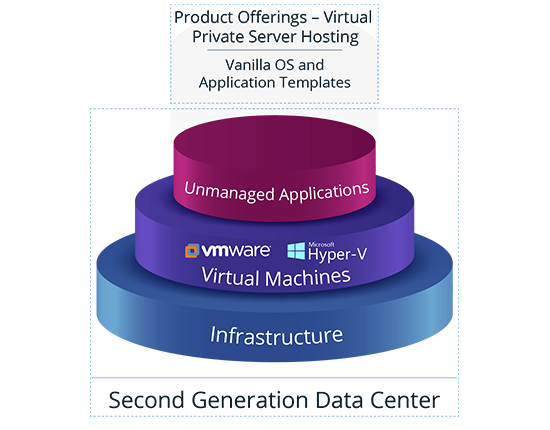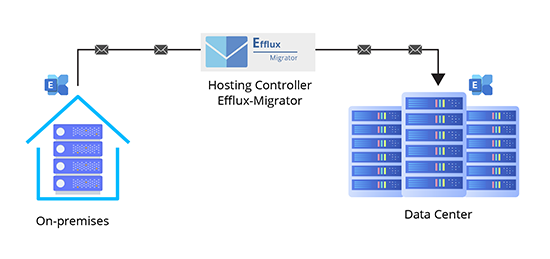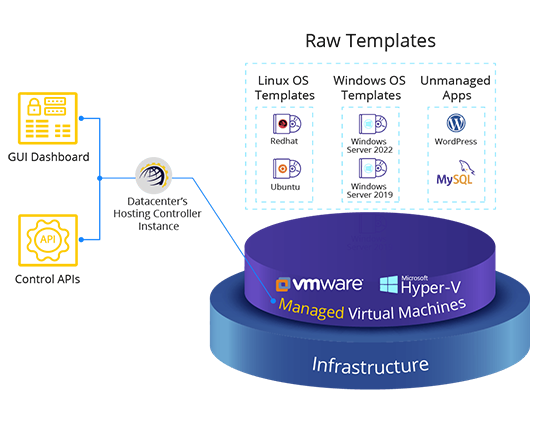Enabling Evolved MSP’s
Go beyond plain infrastructure hosting. Transform your data center into a Managed Service Provider. Offer Managed Application Templates provided by Hosting Controller.

First Generation Data Centers
First Generation Data Centers traditionally provided only the infrastructure. Infrastructure generally included computing, network, and storage. Businesses either rented space in colocation facilities for their infrastructure or were provided dedicated servers by conventional data centers.
Second Generation Data Centers
Then came the Second Generation Data Centers. With the help of virtualization technologies like Hyper-V and VMware, they started offering virtual machines that enabled them to offer Virtual Private Server Hosting. The underlying infrastructure was already there but now they could mount plain vanilla OS and application templates onto their virtual machines and offer them as products. But still, the applications were largely unmanaged.

Next Generation Data Center Solution
See how Hosting Controller evolves Data Centers into Managed Service Providers.
Managed Virtual Machines
Hosting Controller was and still is the right choice for these Second Generation Data Centers as it furnished the ability to convert simple virtual machines to managed virtual machines. By installing its own instance of Hosting Controller, the data center would allow its customers to manage their virtual machines through Hosting Controller’s GUI dashboards and control APIs. The customers can very well:
- Upsize or downsize their virtual machines.
- Create or purge them.
- Take snapshots.
Next Generation Data Centers
Taking it to an all-new level, Hosting Controller now empowers Next Generation Data Centers. Besides their traditional routines these evolved data centers can now leverage Hosting Controller to install and offer Managed Applications.
The Next Generation Data Center hosts its own instance of Hosting Controller that it uses to manage its virtual machines and every customer has its own instance of Hosting Controller that it uses to manage its own instances of applications. These stand out as the Managed Applications.

Seamless Exchange Migration
Migrating your on-premises Microsoft Exchange to a data center has never been easier. Hosting Controller enables phased Exchange email migrations through its smart email migration utility. Adhering to Microsoft best practices, mailboxes continue to operate normally, without any downtime. On-premises and data center deployments co-exist as long as needed. After a successful comfort level with the data center deployment, the on-premises infrastructure can be retired easily.


